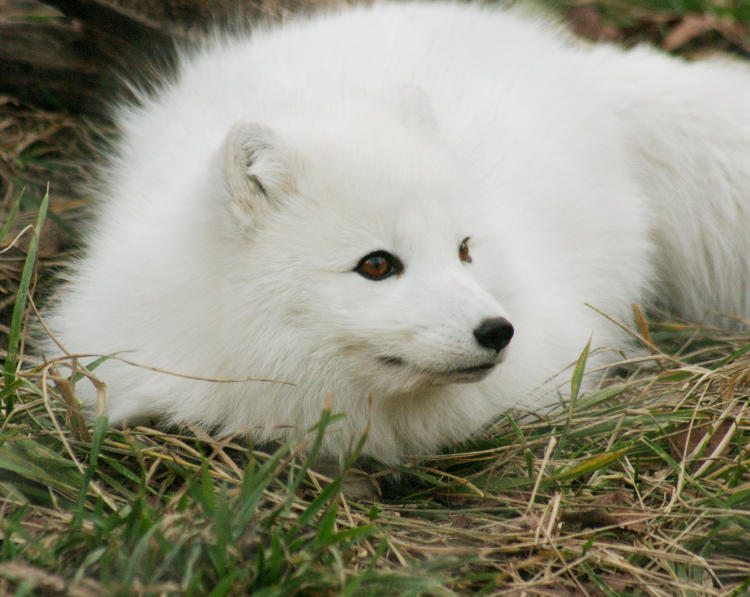
I’m guessing that more than a few people would fail to recognize my photo subject here, because virtually no source ever shows them at this time of year. This image is actually the first in the ‘Mammals’ category of my slide archives – not the first mammal that I’ve shot (that title probably predates this one,) but the first I took when I switched over to slides. It dates from August 1998, and was taken at the NC Zoological Park in Asheboro. This is what an arctic fox (Vulpes lagopus) looks like in its summer coloration.
For a long time, this was the only way that I’d seen them, given that I live hundreds of kilometers from the Arctic Circle and didn’t tend to visit the zoo in the winter. This coat blends in quite well with the summer conditions up there though, where some days it might even get warmish – actually I don’t really know what temperatures it reaches in the summer, though I’m comfortable saying that I wouldn’t wear sandals as frequently as I do here.
But when I say, “arctic fox,” most people (me included) picture this:

Same place, and potentially even the same fox, only eight years (and a few months) later in 2006, christmas eve in fact. The weather that day was remarkably warm – even sandals were feasible – but the fox had developed its winter coat by then and now looked properly arcticky. And of course, garnered a lot more attention now by being pure white and fluffy. Which isn’t the goal in its native conditions, but then again, there are very few human females in such locations, and a lot more golden eagles and polar bears that couldn’t give a fig about ‘fluffy’ but have a harder time spotting a white potential meal against a white snowpack background. As do the foxes’ prey, consisting largely of voles, seal pups, and lemmings.
Some things I don’t have as specific goals but am happy to obtain anyway, and variations in coloration or plumage are good things to have in stock. For any given species this might be challenging – breeding plumage especially, since it often lasts only a few weeks and may be sported by just one sex, so capturing good examples of this might take a lot of time. Granted, that wasn’t the case here, and I wasn’t trying to accomplish this anyway, but it was a productive trip overall.




















































